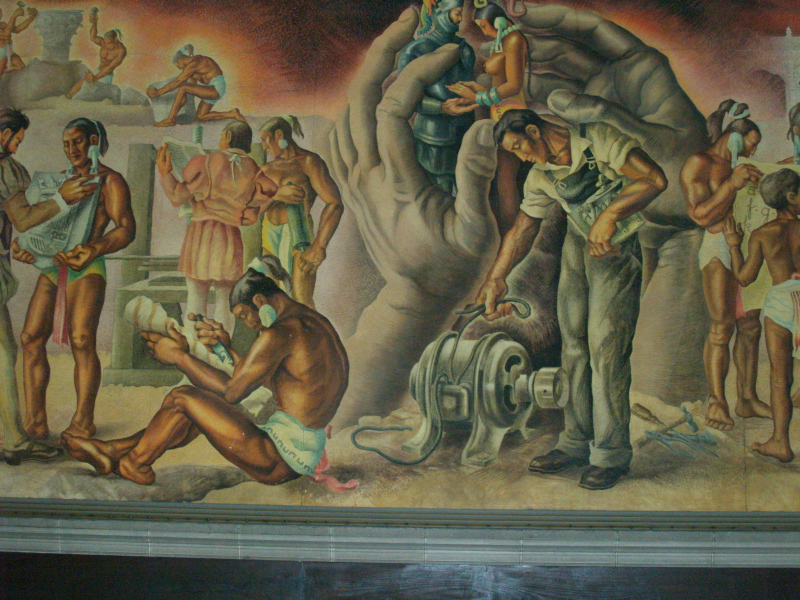The grimly dark account of political murder and betrayal involving Guatemala’s ruling classes in the April 4 issue of the New Yorker (which you can read here) started me thinking about my own time in Guatemala as a freelance reporter on assignment for the Dallas Morning News in the fall of 1982. (I was in many ways the classic freelance journalist: callow, inexperienced, but curious and full of zeal—and also like the classic freelancer, full of parasites. I arrived in Guatemala city flying in from Honduras with a case of amoebic dysentery picked up in the Honduran Mosquitia region.) There’s much I could say about my circumstances, about how I wound up in Guatemala, about my reporting trip itself, which was not going well. But rather than creating a memoir of that time, I would like to use this space to recall with as little embellishment as possible, and as well as I can after so many years, a particular afternoon during my month-long stay in the country that would seem to bear on the New Yorker’s depiction of current conditions there, and especially on the country’s long and tragic civil war—the so-called dirty war—that consumed the final decades of the last century.
I had arrived in Guatemala at an unusual moment in the country’s ongoing civil disturbances. A military officer named Rios Montt had seized power in a coup seven months before and had announced a series of reforms. And in fact, by most accounts violence in Guatemala City, the capital, had fallen. The year before there had been frequent bombings and political murders in the city each month. But critics argued that the government was continuing to wage a brutal war in the countryside against leftist guerrillas and by extension against the native Indian peoples of those regions. This war had long been criticized as the pretext for a brutal land grab against these native communities. Rios Montt denied this, and his critics were of two minds about the denial: one group believed he was simply lying; he was a figurehead who found a way to smooth over the rough edges of the previous regime while continuing its vicious practices. The other group believed Rios Montt to be a kind of naïf in Guatemalan politics, a true believer who thought his reforms were taking hold even as they were being undermined by the Army, which despite his provenance in its ranks, ignored his orders and carried on the dirty war without his knowledge.
Rios Montt’s situation was complicated by religion. In an almost entirely Catholic country, he was an evangelical Christian and a member of an American evangelical church based in California. This church had an impressive compound in Guatemala City, and it was the belief of at least some Guatemalans as well as US observers that the church officers had undue influence on Rios Montt and were even perhaps functioning as a shadow government.
As you can see, there are already two possible shadow governments: the army operating out of Rios Montt’s control, and the American church operating as the force behind his throne. This idea of governing forces operating in shadowy impossible-to-pin-down ways is a primary feature of contemporary Guatemalan politics, as depicted in the New Yorker article. It’s well worth pointing out—and basic fairness dictates this point being made—that Guatemala has made significant progress since the time of the military dictatorship of Montt, and in the eyes of many observers is closer to being a functioning democracy than at any time in recent memory. Yet it’s also true that in both Guatemalas—the contemporary one and the one of Rios Montt’s time—every theory of motive is made murky, as the actual disposition of power lies veiled and hidden.
I made arrangements at a certain point to visit the countryside outside Guatemala City with the idea, no doubt naïve, of trying to find out what was really going on. I traveled, if memory serves, with a British journalist I had met and perhaps another reporter whose background I don’t remember, to San Martín Jilotepeque, a town about 30 miles northwest of Guatemala City, on a bright early fall day. The town had been devastated by the 1976 earthquake that killed more than 20,000 people in Guatemala. Going beyond the main town required permission from the Army—which had involved a good deal of hoop jumping to secure—and an army escort, because the region we were heading into was considered an area of open conflict with the leftist guerrillas who had been fighting the government since the 1960s. The government at this time had set up a series of zones that were supposed to be modeled on the rural pacification program employed in Vietnam, in which the army protected villagers from the leftist by relocating them into model communities. We rendezvoused with an army patrol that would be driving into the rural pacification zone. A young lieutenant was in charge of this patrol, and I concluded, I think rightly, that he was one of the officers who had been placed in a new command as part of Rios Montt’s effort to reform the army. We made the trip standing in the rear of the open army truck with a squad of Guatemalan soldiers.
We arrived in a tiny village after a drive through increasingly dense mountain terrain—I remember this drive as somewhat tense, though perhaps it was only tense for me; certainly the soldiers seemed bored enough. The village was tucked deeply in the folds of the brilliant undulating green mountains of Guatemala’s Central Highlands. In one sense we were driving into the kind of mystical mountain village that American tourists dream of visiting: women in brilliantly colored woven skirts were washing clothing in a stream; wisps of clouds touched the nearby
Read More
